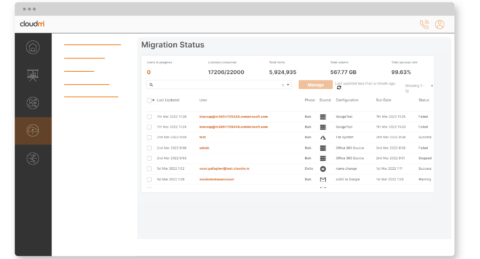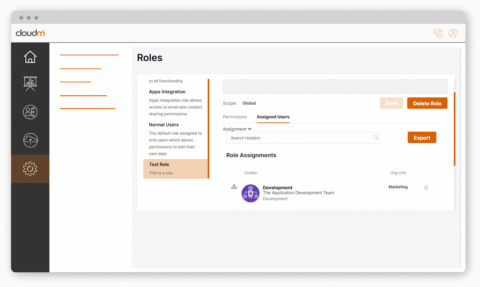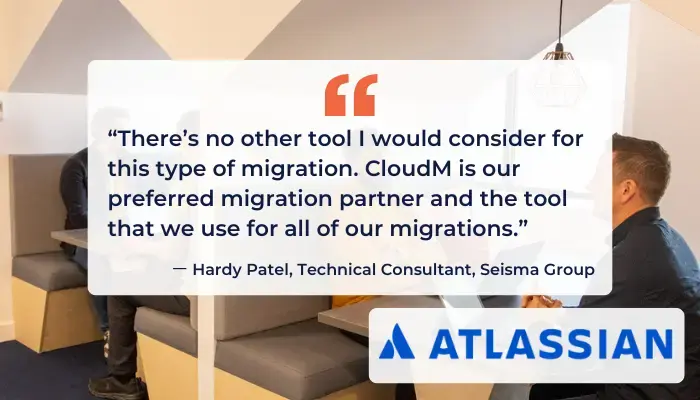A migration without CloudM
Ok, here we go. The moment has finally arrived, you’re making the move to the Cloud. You’ve cleaned up your data, you know where it’s all going, your settings are configured and tests have been done. All you have to do is click the button to start the final migration.
Then the phone goes.
It’s the CEO wanting to know if you’ve started the migration yet. You tell her you’re just about to pull the trigger. “Ok,” she says. “Keep me informed.”
Click and we’re on our way.
Everything looks like it’s running smoothly. 1% down, 99% to go.
The phone rings again.
It’s the Head of the Accounting department wanting to know when the migration is finished so they can update their records. You tell them it’s just started, you’re only 1% in. “When will it be finished?” they ask. You laugh. It could be six hours, could be sixty. You don’t know. They hang up.

It’s still at 1%. You make a coffee, you come back, it’s at 3%. Wait, what happened to 2%?
The phone rings.
It’s the Head of IT, your boss, wanting to know how the migration is coming along. “Well, it’s moving, I know that for sure. We’re 3% done. No, I don’t know how long it will take.”
You go for lunch, you come back, it’s still at 3%.
The phone rings.
It’s the CEO again. “My senior leadership team want to know whether their team’s data has been transferred successfully.” You tell your boss you don’t know the answer. There’s no way to know which data has been migrated, or how much.

She doesn’t sound pleased.
It’s nearly home time. Still at 3%.
You start to worry that something has gone wrong. Nothing has changed for hours. There’s no way to tell if it’s still moving or if everything has frozen. You consider calling someone, but who? You look at the progress bar again… 4%! It is working!
The phone rings.
It’s your boss again. You give her the good news; the migration is still ongoing. How far along are we? Umm… only 4%. How long will it take? No idea. What files have been transferred? Anyone’s guess. Any corrupt or incomplete data? Who knows.
You leave it to run overnight. Coming in the next morning, you rush to your monitor to check the progress.
12% complete. This is going to take forever.
The phone goes.
You ignore it.
A migration with CloudM
Now let’s take a look at a typical migration from an IT admin’s point of view, but this time using CloudM.
Ok, here we go. The moment has finally arrived, you’re making the move to the Cloud. You’ve cleaned up your data, you know where it’s all going, your settings are configured and tests have been done. All you have to do is click the button to start the final migration then the phone goes.
It’s the CEO wanting to know if you’ve started the migration yet. You tell her you’re just about to pull the trigger. “Ok,” she says. “Keep me informed.”
You explain to her that you don’t have to keep her informed. You just need to give her access to Migrate Reporting in CloudM. That way she can see for herself how far along we are in the migration, what the status is of each migration pass, and where the data is being transferred from.

“Oh, that’s handy!” she says.
It certainly is. And this way she can also tell our other stakeholders what’s going on, or even give them access if they want to check for themselves instead of bothering her.
If she wants, you can even give the heads of all departments access, keeping everyone in the loop during this important and stressful time. That way everyone will know where in the process the migration is, including how much data has been transferred to the domain in total, from where, and what the success rate has been.
And best of all, no one has to bother either of you.
“Oh, I don’t think that’s a good idea,” she says. “I don’t like the thought of all those different people having access. What if someone accidentally hits a button and messes something up?”
You know that’s not an issue because of Role-Based Access, CloudM’s feature that restricts users’ rights, only letting them see how things are coming along without giving them the power to change anything.
“Thank you,” she says, but you refuse to take the credit, knowing full well that CloudM did all the work and you just clicked a button.

Know exactly where you are in the migration process
Large data migrations are stressful enough without people constantly asking for updates. Our Migrate Reporting feature solves that problem, taking away the headache of constant update requests.
Through an easy-to-use interface, anyone given access can see exactly where in the process the migration is, including the current state of each migration in your project, where the data has been migrated from, plus the total number of items and item size migrated to the domain so far.
Your IT team doesn’t have to worry about spending hours checking in regularly to give updates, because it’s all there for everyone involved with the project to see. No more pulling reports or sending out daily emails, and you can give access only to those you want to, resting easy that with the role-based access tool, people can’t change settings or accidentally cancel the migration halfway through.
It’s just another example of why CloudM is a leader in migrations, making life easier for everyone involved.
Contact us today if you would like to know more about our migration services, from our Hosted and Self-Hosted DIY options through to a full “let us take care of everything” Serviced Migration.









